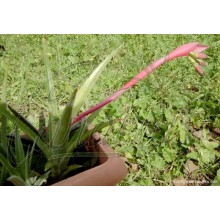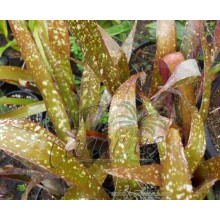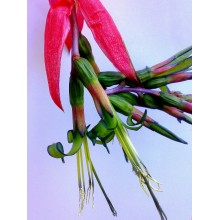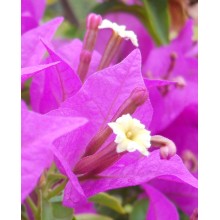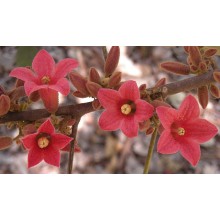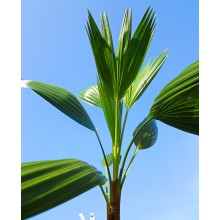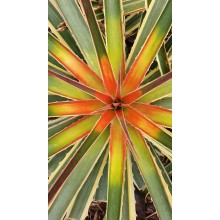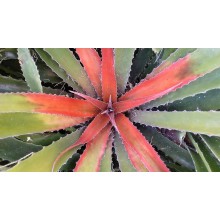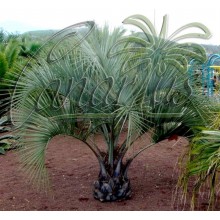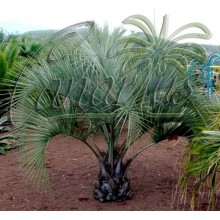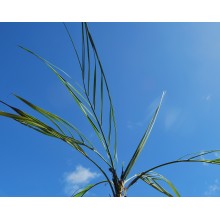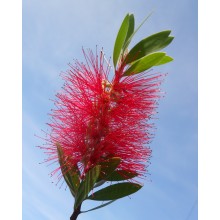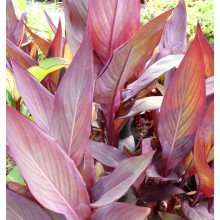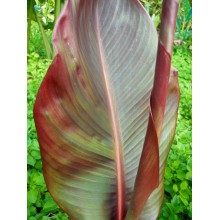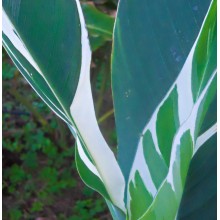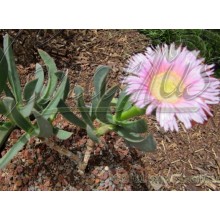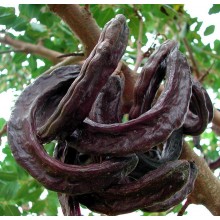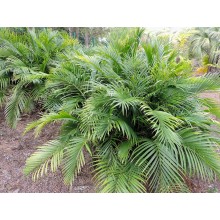Plantas resistentes al Frío Hay 317 productos.

Esta es nuestra selección de plantas que pueden soportar algo de frío. Algunas sólo resistirán un clima frío y un poco de escarcha, pero otras aguantarán fuertes heladas en climas más fríos. Todas son muy diferentes, pero merecen ser probadas, porque todas estas plantas de aspecto tropical tienen requisitos no tropicales. Seguramente prosperarán al aire libre en climas mediterráneos costeros, o en un invernadero mínimamente climatizado donde no se cree escarcha.
-
Billbergia sp. Suculenta
Billbergia sp. Suculenta
Unusually succulent pink-blooming Billbergia, hardy to light frost. It is polymorphic and grows from a juvenile through three stages: 1. short-leaved compact succulent rosette, 2 tall, thin leaves, 3 a typical tube billbergia.
14,50 € -
Billbergia x Hoelscheriana
Billbergia x Hoelscheriana
A very old, cold-hardy hybrid with densely spotted leaves, created by crossing Billbergia nutans x B. saundersii. It is tolerant of both sun and shade.
20,40 € -
Billbergia x Windii
Billbergia x Windii
Old hybrid able to bloom two to four times a year. It forms a compact clump of green arching leaves with soft spines, bearing bright pink pendant inflorescences. It is perfect as an epiphyte or in baskets. It can grow in cool conditions and can take frost to about -5 C.
12,50 € -
Bougainvillea glabra Sanderiana
Bougainvillea glabra Sanderiana
This is an old classic bougainvilla, and it is hardier to cold than most types. It has very dark green leaves and an unmistakeable vibrant pink colour.
28,00 € -
Brachychiton bidwillii
Brachychiton bidwillii
Ornamental deciduous shrub to small tree native to Australia, 2-4 m tall . It flowers profusely before the new leaves appear. This is the cold-hardier form from Southern Queensland. It has beautiful deeply-lobed leaves and it can take frost to about -5 C.
29,30 € -
Brahea edulis
Brahea edulis
This palm is native to the mountains of the small island of Guadalupe, off of the Western coast of Mexico. It is really endangered in habitat but it thrives in cultivation under a wide range of conditions. A perfect species for the Mediterranean.
26,00 € -
Bromelia 'Que sera'
Bromelia 'Que sera'
Wow! "Qué será", Whatever will be will be, is a supershowy, fiercely spined bromeliad suitable for non-tropical climates. Its leaves have cream-yellow stripes on dark green with pink hues. It is not too large and eventually produces a spectacular red inflorescence. It is remarkably hardy to light frosts.
47,50 € -
Bromelia flemingii
Bromelia flemingii
Bromelia flemingii, is a bromeliad with ferocious thorns, suitable for non-tropical climates. Its leaves are dark green with pink hues. It produces a spectacular red inflorescence. It is remarkably resistant to light frost.
39,00 € -
Butia odorata - Jelly Palm
Butia odorata - Jelly Palm
Feather palm with sweet, tasty, scented fruits. It is native to Brazil, Uruguay and Argentina and it is the only frost-hardy species of palm that can produce abundant, delicious and useful fruits in colder climates. Leaves are blue-silvery, elegantly arching. Mature specimens show no damage at -10 C and some have survived to -20 C !
43,50 € -
Butia odorata - Jelly Palm - Large
Butia odorata - Jelly Palm - Large
Feather palm with sweet, tasty, scented fruits. It is native to Brazil, Uruguay and Argentina and it is the only frost-hardy species of palm that can produce abundant, delicious and useful fruits in colder climates. Leaves are blue-silvery, elegantly arching. Mature specimens show no damage at -10 C and some have survived to -20 C !
159,00 € -
Butia X 'archeri x paraguayensis'
Butia X 'archeri x paraguayensis'
This is a cross between two uncommon dwarf palms from eastern central Brazil. It is said to be a natural hybrid because two populations overlap in the same area. Both parents are cold-hardy palms, suitable to plant in milder parts of Europe.
162,00 € -
Callistemon citrinus
Callistemon citrinus
Callistemon citrinus, commonly called scarlet bottlebrush, lemon bottlebrush or red bottlebrush, is a large evergreen tropical shrub native to Australia.
54,00 € -
Canna indica 'Intrigue'
Canna indica 'Intrigue'
Purple leaved canna, commonly cultivated in Northern Tenerife. Thick purple leaves are held erect and have some bluish tones.
18,70 € -
Canna x 'Musifolia rubra'
Canna x 'Musifolia rubra'
Fabulous tropical foliage from a cold-hardy Canna! Up to 2 meters in height, with large bold erect leaves, with wavy margins. Leaf colour is absolutely vibrant, glossy red, burgundy, and dark green. It is reminiscent of the famed tropical Heliconia indica with red foliage.
22,75 € 32,50 €¡Precio rebajado! -
Canna x 'Stuttgart'
Canna x 'Stuttgart'
This variegated Canna selected in Germany produces leaves variably variegated with stripes of different shades of white. Also the flowers are often variegated! It loves moisture and can reach anything between 1 and 3 m in height, depending on the length of your growing season.
30,80 € -
Capparis spinosa 'Salina Spineless' - Caper
Capparis spinosa 'Salina Spineless' - Caper
Mediterranean capers are an incredible source of flavour. Plants grows on sunny and rocky slopes, often by the coast. They are winter-deciduous and come back each year with lovely rounded leaves, which are often purple when they sprout.
48,30 € -
Carpobrotus mellei
Carpobrotus mellei
Endemic to the inland mountains in the SW Cape ofS Africa. It easily blooms in pots and does not need to bein the ground. It is the only mountain Carpobrotus and does not need a coastal climate. Leaves contain natural antibi
11,90 € -
Ceratonia siliqua - Carob tree
Ceratonia siliqua - Carob tree
Carob trees are culivated throughout the Mediterranean. Fruits are highly nutritious: sweet, fibrous and juicy with a typical aroma reminiscent of chocolate. The ree itself is very ornamental too, with leathery glosssy dark green foliage.
36,80 € -
Chamaedorea cataractarum
Chamaedorea cataractarum
Small, attractive, trunkless, relatively slow-growing, clumping palm with dense, cascading, dark green fronds and long thin leaflets.
26,30 €
En estos momentos tenemos pocos productos en esta categoría Plantas resistentes al Frío

















